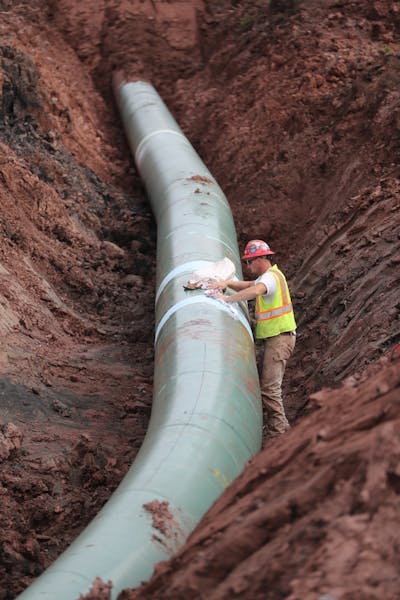Since 2002, Enbridge's pipelines in Minnesota have sprung 60 leaks, although the company's spills in recent years have involved considerably less oil, according to a Star Tribune review of pipeline safety data.
Enbridge had 20 spills of 210 gallons or more between 2002 and 2016, according to an analysis of data from the U.S. Pipeline and Hazardous Materials Safety Administration (PHMSA). Under the agency's guidelines, pipeline incidents are considered significant when they involve at least 5 barrels — 210 gallons — of liquid, or cause an explosion, death, injury or damages of at least $50,000.
Enbridge's worst spill in that time frame occurred in 2002, when the company's Line 3 failed near Cohasset, releasing 252,000 gallons of oil. Its largest spill ever in Minnesota — and one of the biggest U.S. onshore oil spills — occurred in 1991 when 1.7 million gallons leaked from Line 3 near Grand Rapids.
From a volume perspective, there have been 336,000 gallons spilled from Enbridge pipelines since 2002, about one-third of all hazardous liquids released from pipelines statewide during those years. Enbridge's pipelines make up nearly 40 percent of the hazardous liquid pipelines running through Minnesota (including pipelines for crude oil, petroleum products and anhydrous ammonia).
Generally, the number of crude oil spills in Minnesota and their severity have been below national averages since 2001, according to a recent report by the Minnesota Department of Commerce.
The rate of significant spills per pipeline mile annually in Minnesota was 77 percent of the U.S. rate during 2010 through 2016, according to the department, which defined a significant spill as more than 238 barrels, or about 10,000 gallons. The volume spilled per pipeline mile in Minnesota was 62 percent of the U.S. as a whole during the same time period.
AP Photos: The skies fill with color at a Chinese kite festival

The Senate passes a reauthorization of a key US surveillance program just after a midnight deadline

Why you should donate clothing: It (probably) won't end up at the dump

